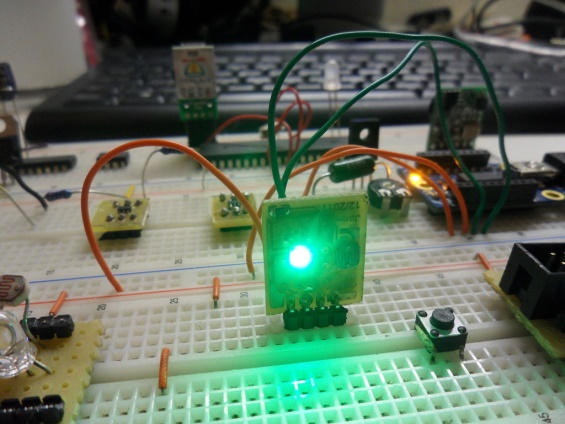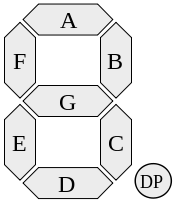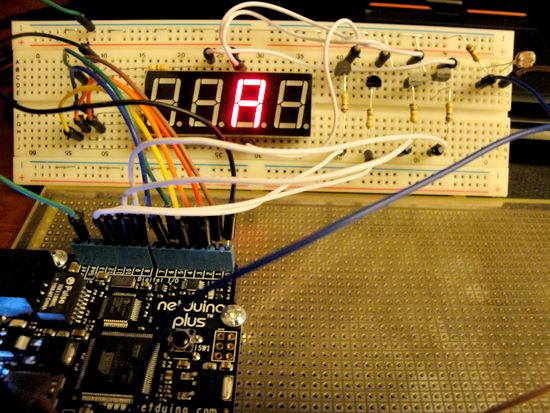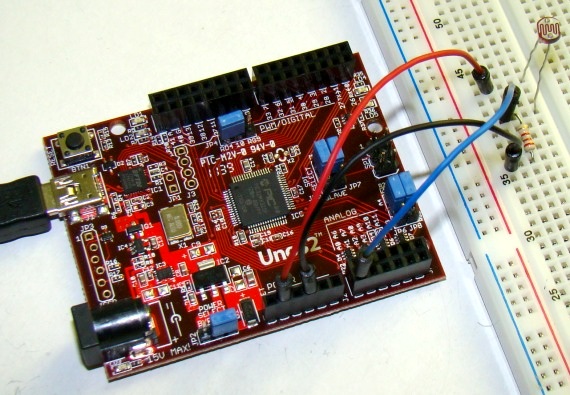Making a digital color sensor using RGB LED and photo-cell

Electronic color sensors find applications in many automated processes such as sorting objects by color, detecting presence of a color coating, etc to improve quality at production line speeds. The fundamental principle of color detection is very simple. You can use an RGB LED and a basic light dependent resistor (LDR) to construct a simple color sensor. The idea is to illuminate a sample material with three primary colors (red, green, and blue), one at a time, and measure the reflected amount of light using the LDR. Each material reflects different combination of red, green, and blue light. For example, the material with red color reflects red light the most. So the LDR response would be higher to the reflected red light than the other two colors. Thus, measuring the amount of light reflected from the sample surface under illumination from red, green, and blue LED individually, the color of the sample surface can be identified.






